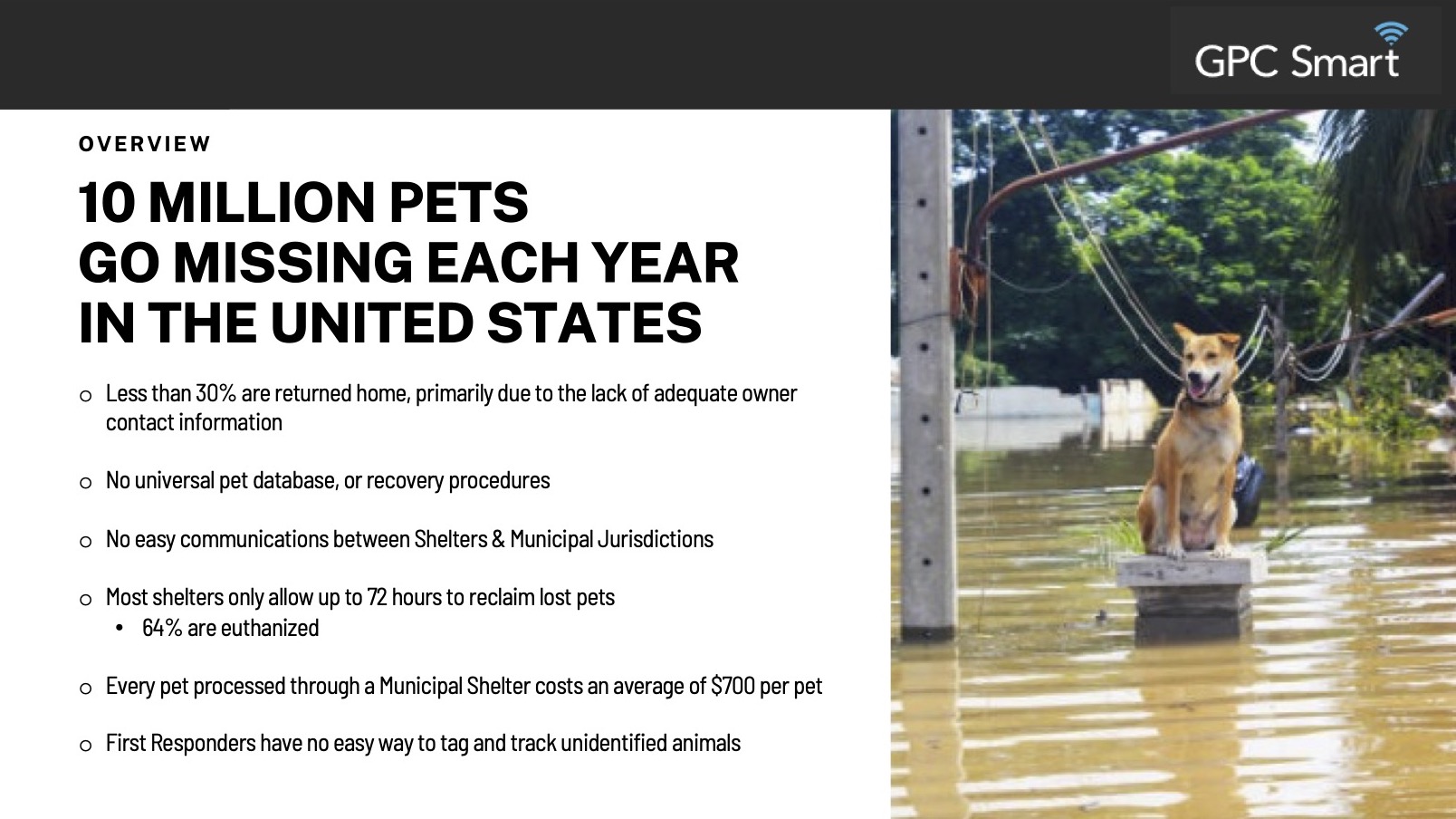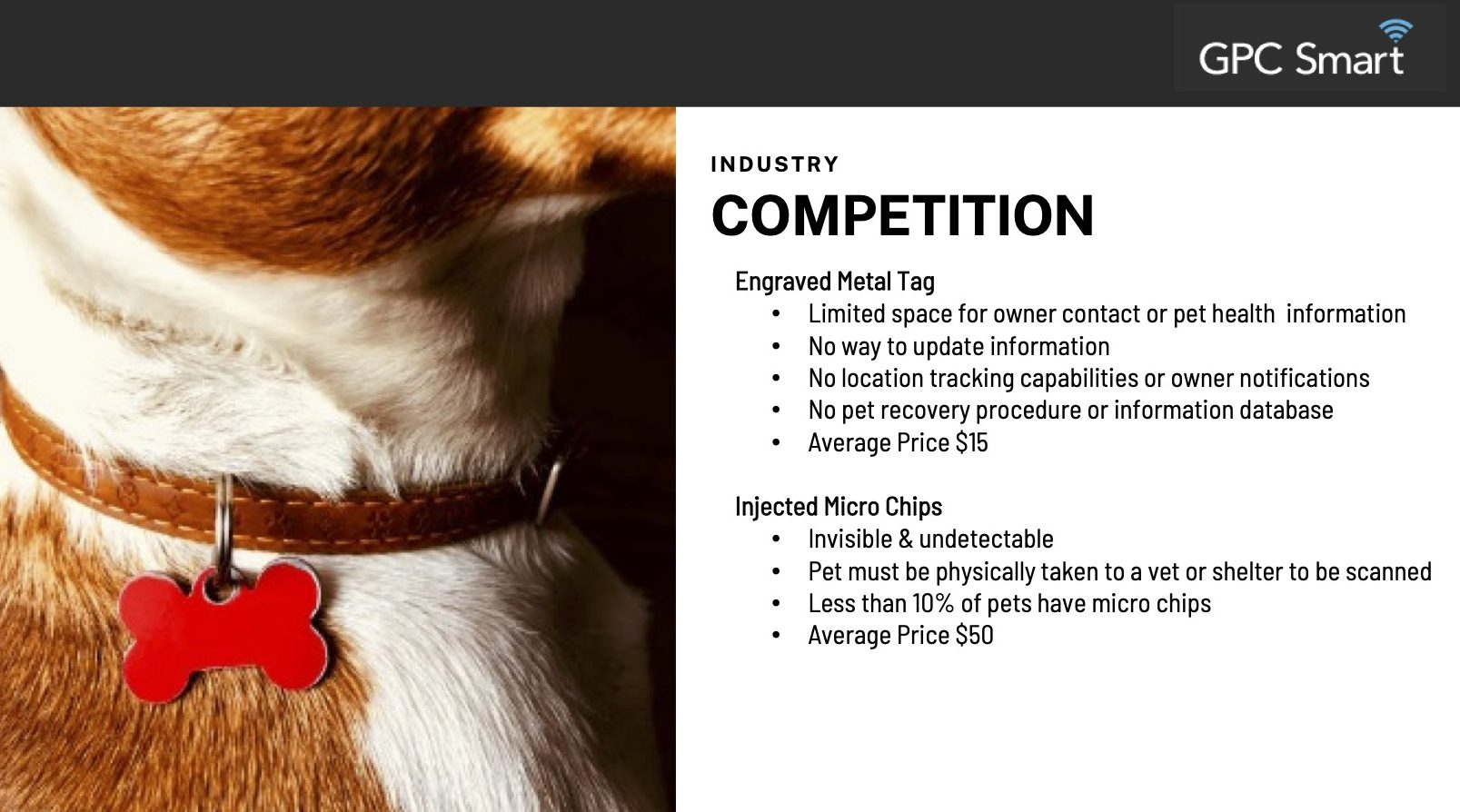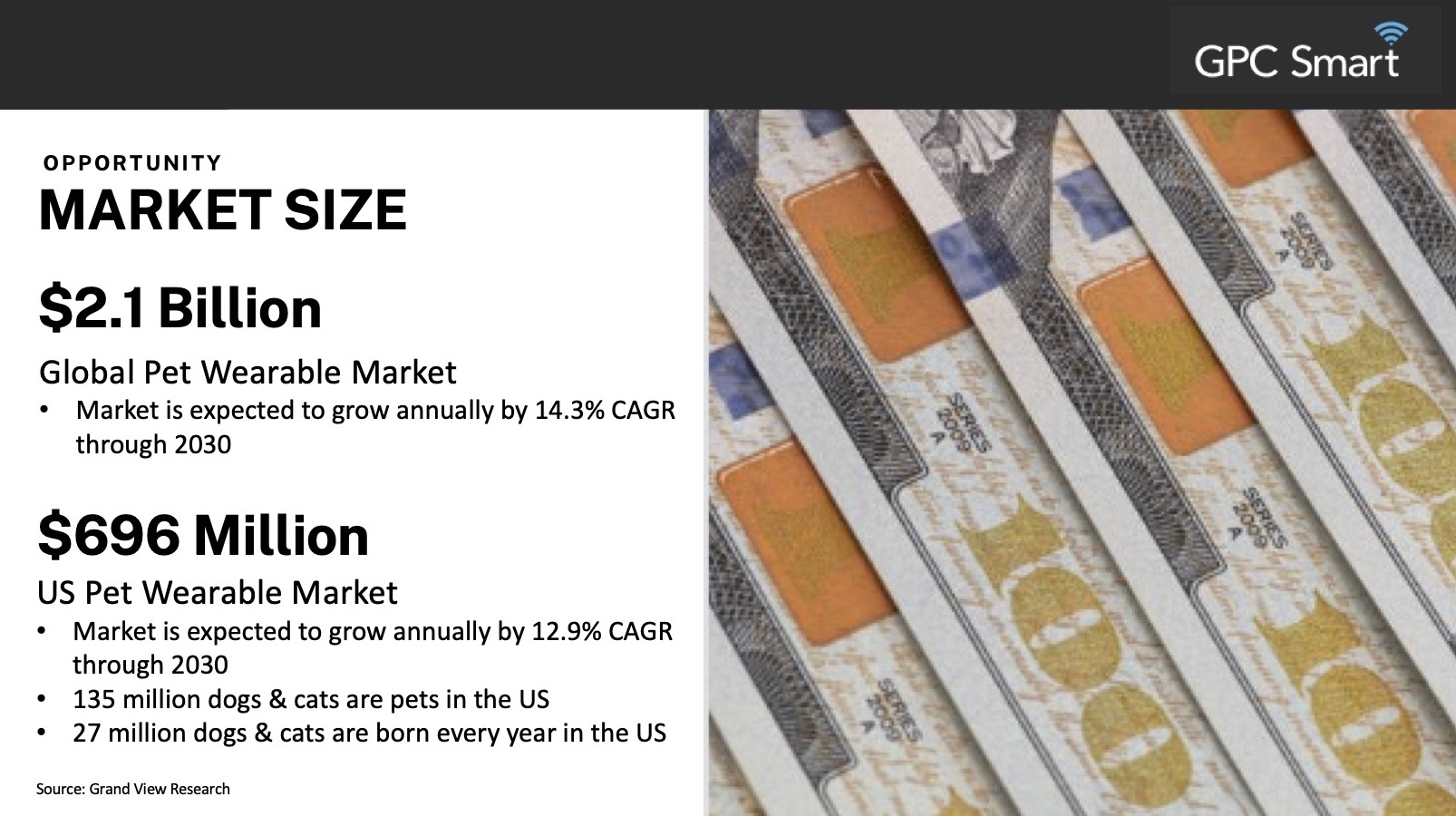Syneroid recently raised a $500,000 round of funding to bring something halfway between microchips and dog collars to market. The company is finding some interesting slices of the market, but the deck, overall, leaves a few things to be desired. We learn more from mistakes than from perfection, so I figured it’d be a great one to dive into for this week’s pitch deck teardown!
We’re looking for more unique pitch decks to tear down, so if you want to submit your own, here’s how you can do that.
Slides in this deck
Throughout this pitch deck teardown, you’ll see the company referred to as Syneroid and GPC Smart — the company’s official name is the former, but the brand they are using for the pitch deck and its products is the latter. The company told me it raised this round at a $3.9 million valuation.
The company used a tight, 12-slide deck for its pitch, and no information has been redacted or omitted.
- Cover slide
- Problem slide
- Competition slide
- Solution slide
- Competitive advantages slide
- History/traction slide
- Market-size slide
- Target markets/go-to-market slide
- Team slide
- Operational financials slide
- Ask slide
- Contact slide
Three things to love
Syneroid is entering a market that’s very easy to understand: Lost animals are something that most of us have an experience with in one way or another. That’s an advantage in that you don’t have to explain the market in detail. It also means that the company is facing a wall of potential competitors even as it is trying to gain traction. That’s a challenge, and it’s interesting to see how Syneroid is tackling it.
Cover the gap between the perceived and the actual

[Slide 2] The overview slide does a great job of getting investors up to speed. Image Credits: GPC Smart Tags
An investor likely knows at least some of this, but these bullets augment (or gently correct) any preconceived notions an investor might have, smoothing the delta between their perception of the market and the realities of being in that market. This slide — while fairly wordy — does a really good job of ironing out any misunderstandings an investor may have.
Having said that, it also brings up some important questions. Lost pets are just one part of the challenge; stolen pets will have their collars removed, and animals that go astray are on occasion able to shed their collars. Syneroid doesn’t really address either scenario.
Great competition overview
It’s pretty rare to see a startup put its competitor overview front and center, but I think that was a really shrewd move in this case. Again, this is not a deep tech play or a market shrouded in mystery. I suspect that most would-be investors would be able to come up with the two major competitors. Tackling that head-on does seem a little defensive, but given the market, I think it makes a lot of sense in this case. Here’s how the company addressed it:

[Slide 3] Tackling competitive alternatives this early in a slide deck is unusual but probably a good move in this case. Image Credits: GPC Smart Tags
If the animal is stolen, the thief will simply discard the collar, and at that point, it doesn’t really matter what’s on the collar.
This slide shows an understanding of the competitive landscape. I love that the company chose to tackle this upfront. I think it’s important, and it’s a great way to get out ahead of the most obvious pushback from investors.
Like on the previous slide, although its presence is encouraging, it raises some questions. I think an NFC/QR code dog collar is interesting, but I’m struggling to see how they are inherently better than standard engraved tags. The exact laser-engraved tag in the photo doesn’t cost $15, as listed on the slide, but can be ordered from Amazon — fully personalized — for $4, with four lines of text on each side of the metal tag.
Sure, you can’t “update” the information, but pet owners are probably able to afford the $4 every time they move or change their phone numbers. You can’t include location information, but someone who is willing to catch a stray pup is probably able to text or call the owner with an address and details. Again, if the animal is stolen, the thief will simply discard the collar altogether, and at that point, it doesn’t really matter what’s on the collar. As far as tracking goes, an Apple AirTag might be a good solution for those situations (but it’s as easy to throw an AirTag into the bushes as any other collar).
This slide shows that the founders understand the challenges with their messaging and positioning, but it also shows that its answers are a work in progress.
A beast of a market
The pet market, both in the U.S. and globally, is fantastically big. Investors know that, but adding a reminder can’t hurt. You don’t have to capture that big of a market share to build a very significant business here.

[Slide 7] Hellooooo market size. Image Credits: GPC Smart Tags
This slide shows the overall size of the market, which is awesome, but I would have liked it even better if the company said something about what it believes its serviceable market is and how it is going to go after those customers.
The thing you can learn from this slide as a startup? Have clarity on your market size and show off that it is big and trending toward growth.
In the rest of this teardown, we’ll take a look at three things Syneroid could have improved or done differently, along with its full pitch deck!
Pitch Deck Teardown: Syneroid’s $500K seed deck by Haje Jan Kamps originally published on TechCrunch
from https://ift.tt/8Z2a5eX
via Technews







No comments:
Post a Comment